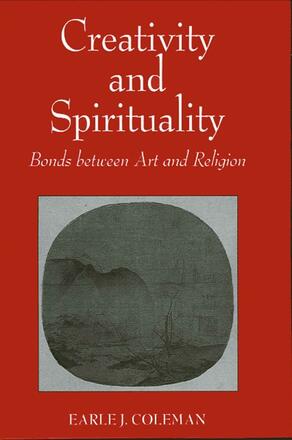
Creativity and Spirituality
Bonds between Art and Religion
Alternative formats available from:
Drawing from six living faiths, this book philosophically analyzes relations between art and religion in order to explain how the concepts "art," "beauty," "creativity," and "aesthetic experience" find their place or counterparts in religious discourse and experience.
Description
From the architecture of Frank Lloyd Wright to the rock gardens of Zen Buddhism, Coleman explores applied, fine, and folk arts in order to uncover points of coalescence between art and religion. Drawing from six living faiths (Buddhism, Christianity, Hinduism, Islam, Judaism, and Taoism), this book philosophically analyzes relations between art and religion in order to explain how the concepts "art," "beauty," "creativity," and "aesthetic experience" find their place or counterparts in religious discourse and experience. Coleman repeatedly shows that aesthetic ideas can serve as bridges to spiritual categories, as when he relates aesthetic bliss to "the peace that passes all understanding. "
The author follows a three-fold approach; first, he examines ideas and motifs from religious classics in world literature, such as Lao Tzu's Tao Te Ching and The Interior Castle by Teresa of Avila, in order to relate them to aesthetic phenomena. Second, he turns to the statements of artists, such as Leo Tolstoy, Vincent van Gogh, Paul Gauguin, Shih-t'ao, and Wassily Kandinsky, for themes and practices that have religious significance. Third, he analyzes and evaluates the writings of various theoreticians—philosophers, theologians, art critics, sociologists, and psychologists—on the relations between art and religion. Coleman demonstrates, for example, that Martin Buber's I-Thou relationship captures much that is central to art, creativity, and aesthetic experience as well as to religious life.
Among the themes that receive sustained treatment are: the varieties of union in art and religion, the child as a paradigm for artists and saints, and creativity as essential to religion. Finally, the author critically weighs proposed distinctions between art and religion and between the broader categories of the aesthetic and the spiritual, rejecting some and showing how others are compatible with his proposal that the aesthetic and the spiritual are cognate categories.
Earle J. Coleman is Associate Professor of Philosophy and Religious Studies at Virginia Commonwealth University. He is the author of several books, including Varieties of Aesthetic Experience and Philosophy of Painting by Shih-t'ao.
Reviews
"Professor Coleman has produced an original, insightful, and very challenging book. I always suspected there's an ultimate bond between art and religion, but he has defined the link between the two with greater clarity and precision and insight than anyone in the past has ever even attempted. For those interested in art and those interested in religion and those interested in a relationship between the two, this book is an absolute must. " — Andrew Greeley, The University of Chicago